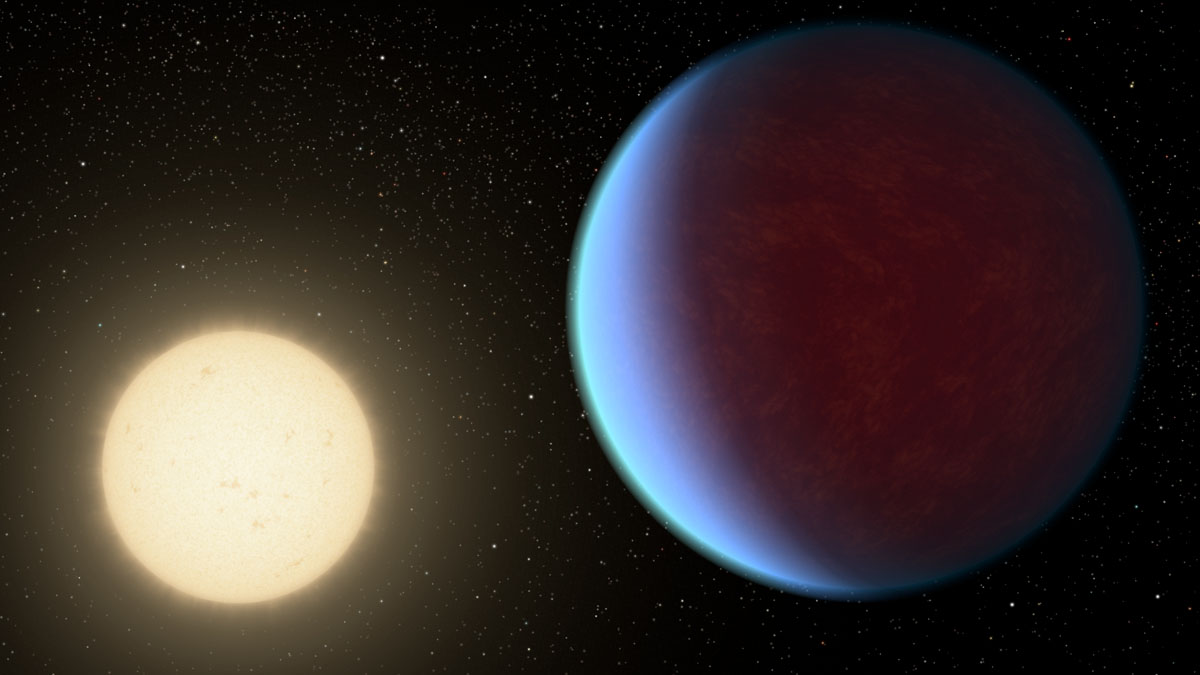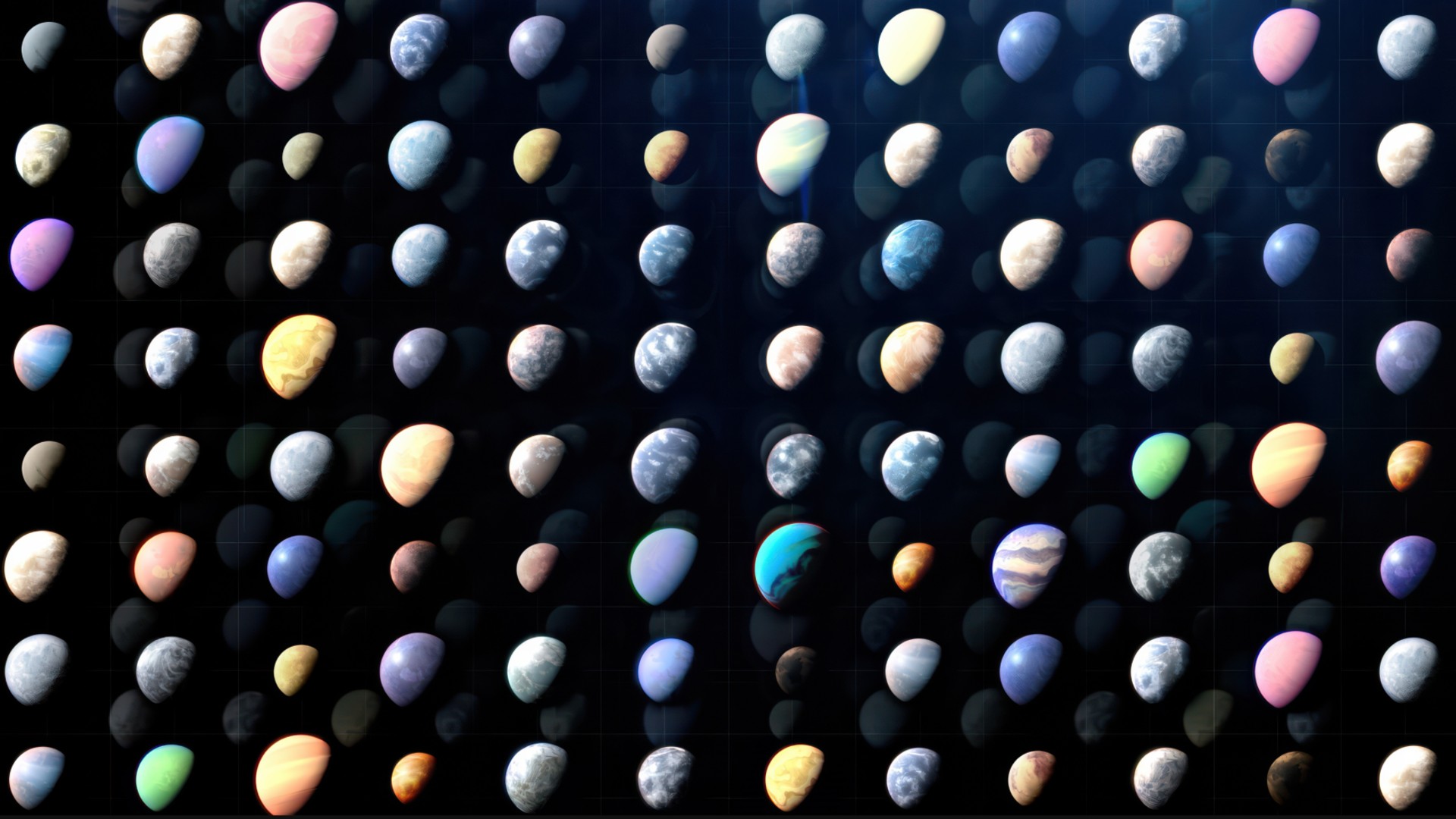Can rocky worlds exist between alien gas giants?


A wild variety of star systems exist in the nearby regions of the Milky Way, and astronomers are eager to know where they might find an "Earth 2.0," or an Earth-size exoplanet that has liquid water and orbits in the habitable zone of its parent star.
Now, new simulations show that it's possible for an Earth-like planet to arise in pretty much the last place you might look: between the orbits of two giant worlds. And there may be such an example right on our doorstep.
Those weird neighbors
Meet 55 Cancri, a binary star system located about 41 light-years from Earth, in the direction of the constellation Cancer. The main star in that system is a main-sequence star that is slightly smaller than the sun but much more enriched in heavy metals such as iron. Besides that high metallicity, though, it's a pretty average star.
But it's not alone; it has a binary companion, a small red dwarf orbiting over 1,000 astronomical units (AU) away from it. (One AU is the average distance between Earth and the sun — about 93 million miles, or 150 million kilometers.)
Related: 7 ways to discover alien planets
This star system also has a lot of planets. And they're big. 55 Cancri hosts four planets packed closer to their star than Earth is to the sun. The nearest planet to the main star of 55 Cancri has a mass eight times that of Earth, with an orbit closer than Mercury's orbit around the sun. Next come three massive beasts: two that are 50 times more massive than Earth and one with almost the mass of Jupiter.
The last known planet in that star system is a world that has a mass almost four times Jupiter's and that orbits a mere 5 AU from its star.
Breaking space news, the latest updates on rocket launches, skywatching events and more!
But those are just the known planets in that system; there might be more planets tucked inside, especially smaller ones that we cannot detect yet. Exoplanet detection methods have a much easier time finding giant worlds that are close to their parent stars, because those systems are more easily detectable. But it's also possible for smaller or more distant worlds to exist in all of the exoplanet systems we've studied.
On the shoulders of giants
A team of researchers recently used a suite of planetary formation simulations to determine if the 55 Cancri system could potentially host more Earth-size planets.
Their simulations looked specifically at the region of the system between the fourth and fifth planets, in the star's habitable zone, or the region where a planet might be able to retain liquid water on its surface (not too close and hot for all the water to boil off, and not too far away that it might freeze).
Because of the sheer amount of computational resources needed to fully simulate the planet-formation process in these hundreds of scenarios, the researchers adopted a statistical approach: They began their simulations with a protoplanetary disk (a rotating disk of gas and dust surrounding a newly formed star) composed of 500 Mars-mass embryonic protoplanets, and allowed them to collide, merge and splinter.
The researchers found that even though the giant planets gobbled up most of the inventory of raw materials for planet making, there was still plenty of material left to make an Earth-size world. What's more, the gravitational influence of those massive worlds did not disrupt the planet-making process in between them, the team wrote in a paper recently published to the preprint database arXiv.
From hundreds of simulations of potential starting conditions, the researchers found that an Earth-like planet could potentially form in the 55 Cancri system. Given what we know about protoplanetary disks and what it takes to build a system of such giants, that Earth-like world could have as much as six times the water inventory of Earth.
However, from the simulations, the researchers found that such an Earth-like world would have only a 10% chance of lying within the habitable zone of 55 Cancri and would, therefore, likely be a frozen water world.
Nonetheless, the results show that Earth-like planets can potentially form in systems that host a number of giant, close-packed worlds. The findings open up more potential for discovering habitable worlds in other stellar systems and potentially increase the chances of finding an Earth 2.0 in a place where we wouldn't expect to look.
Follow us on Twitter @Spacedotcom and on Facebook.

Paul M. Sutter is a cosmologist at Johns Hopkins University, host of Ask a Spaceman, and author of How to Die in Space.
